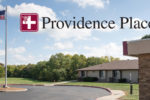Senior Awareness

November is National Alzheimer’s Disease Awareness Month
Did you know Former President Ronald Reagan designated November as National Alzheimer’s Disease Awareness Month in 1983? At the time, fewer than two million Americans had Alzheimer’s. Today, the number of people with the disease has soared to nearly 5.4 million. Other celebrities like Glenn Campbell, Rita Hayworth, Charlton Heston, Norman Rockwell, James Stewart and Robin Williams have been diagnosed with Alzheimer’s.
Alzheimer’s is a progressive disease and a type of dementia that causes problems with memory, thinking and behavior. Symptoms usually develop slowly and get worse over time, becoming severe enough to interfere with daily tasks. Alzheimer’s is the most common cause of dementia, a general term for memory loss and other cognitive abilities serious enough to interfere with daily life. Approximately 200,000 Americans under the age of 65 have younger-onset Alzheimer’s disease.
10 Early Signs of Alzheimer’s
- Memory loss
- Trouble planning and solving problems
- Familiar tasks at home or work are a challenge
- Confusion with time or place
- Trouble understanding visual images and spatial relationships
- Words, conversations and writing are frustrating
- You lose things
- Lapse in judgement
- Withdrawal from work or social activities
- Mood changes
Get checked. Early detection matters and current treatment approaches focus on helping people maintain mental function, manage behavioral symptoms, and slow or delay the symptoms of disease. A senior assisted living can help after diagnosis. Memory care is a long term intensive form of senior care. Seniors in a memory care community often require help with bathing, dressing and much more. At Tutera Senior Living, for example, they have communities that are fully staffed 24 hours a day to provide the highest quality of care throughout all stages of dementia. Meghan Ziegelmeyer, Director of Sales and Marketing of Tutera Senior Living and Health care added, “To better respond to the needs of our seniors, our team is trained to care for residents with dementia and our company provides continuing education with the most up to date research for our team members in order for them to provide the best care. They provide compassionate care to our residents and support to their caregivers. Our communities have specialized programming for our memory care residents so they can be as independent as possible.”

National Hospice Pallative Care Month
November is also National Hospice and Palliative Care Month. PACE and other programs across the country are reaching out to raise awareness about hospice and palliative care. This year’s theme is “It’s About How You Live.”
Hospice and palliative care programs provide pain management, symptom control, psychosocial support and spiritual care to patients and their families when a cure is not possible. These programs combine the highest level of quality medical care with the emotional and spiritual support that families need most when facing a serious illness or the end of life.
Hospice is a specialized type of care for those facing a life-limiting illness, their families and their caregivers. Hospice care focuses on the quality of life rather than its length. It provides humane and compassionate care for people in the last phases of an incurable disease so that they may live as fully and comfortably as possible.
Palliative care is for adults and children with serious illness that focuses on relieving suffering and improving quality of life for patients and their families, but is not intended to cure the disease itself. It provides patients of any age or disease stage with relief from symptoms, pain, and stress, and should be provided along with curative treatment.
Reasons Why You Should Put Your Loved One in Hospice Care
- It’s a philosophy of care. Most people say they would like to die at home, but it is difficult to coordinate with a terminal illness. Hospices bring everything you might need home – hospital bed, bedside commode, medications, bandages, expert medical staff – tailored to your needs.
- You must qualify for Hospice, but can opt out any time. Two physicians must certify that you have a life-altering condition that comes with an expected prognosis of life of six months or less.
- You may live longer during the time you have left. Hospice recipients live longer than those patients receiving standard care. Plus, you’re at home in familiar surroundings where your family and friends can be with you.
- You can see your regular doctor. Most likely, you will be surrounded by a multi-disciplinary team of a physician, a nurse (both on call 24 hours a day); a social worker, counselor or chaplain; and a volunteer. And you remain in charge of your medical decisions.
- Hospice can enrich the last stage of life. Almost a third of those with a terminal illness die in the hospital, hooked up to machines that do little to halt the process of dying. Hospice is designed to support the more personal aspects of this life stage: reflecting on one’s legacy and life meaning, focusing on relationships in a deeper and more intentional way, achieving a sense of closure, and realizing any end-of-life goals, such as attending a grandchild’s graduation or getting financial affairs in order.
- Hospice is for the entire family. It’s not always easy to witness the hallucinations of delirium or understand the body language of someone who can no longer speak, for example. A hospice nurse can help interpret what’s happening, or explain the signs of imminent death. And when families need a break, the sick person can spend up to five days at a time in inpatient respite care, such as in a nursing home or hospice facility.

Mission Chateau is one of four Tutera Senior Living and Healthcare communities that provides Assisted Living and Memory care in the Kansas City Metro area. To learn more about Tutera Senior Living and Healthcare visit their website at www.tutera.com
National Family Caregivers Month
National Family Caregivers Month, celebrated each November, is a time to recognize and honor family caregivers across the country. This is a time to celebrate the contribution of those volunteer friends and family members who support a loved one with their health or managing a disability. We’re thankful for the contributions of the more than 44 million Americans who care for a family member, friend, or neighbor. Assisted living facilities also play a huge role for families caring for their loved ones. Ziegelmeyer with Tutera shared, “Change can be extremely hard especially for seniors. Tutera Senior Living and Healthcare provides unparalleled hospitality. By getting to know all about our residents before they move in, our team makes the transition seamless.”
With 2.2 million stroke family caregivers in the U.S., the American Heart Association & the American Stroke Association provide post-stroke resources, information, and recognition family caregivers need to not only help their loved one, but to find the time for self-care they often lose. Ziegelmeyer continued, “Our communities offer support groups for our caregivers and provide ongoing education on the disease process. We also have family nights once a month and have guest speakers to provide their expertise and guidance on the disease and what to expect throughout the disease process.”
Celebrating Family Caregivers during NFC month enables all of us to:
- Raise awareness of family caregiver issues
- Celebrate the efforts of family caregivers
- Educate family caregivers about self-identification
- Increase support for family caregivers
The Caregiver Action Network (the National Family Caregivers Association) began promoting national recognition of family caregivers in 1994. President Clinton signed the first NFC Month Presidential Proclamation in 1997 and every president since has followed suit by issuing an annual proclamation recognizing and honoring family caregivers each November.
For more information on Tutera Senior Living and Health Care
877.988.8372 | Tutera.com






